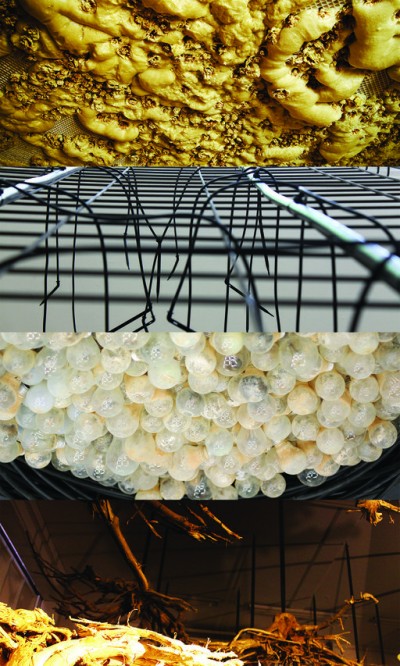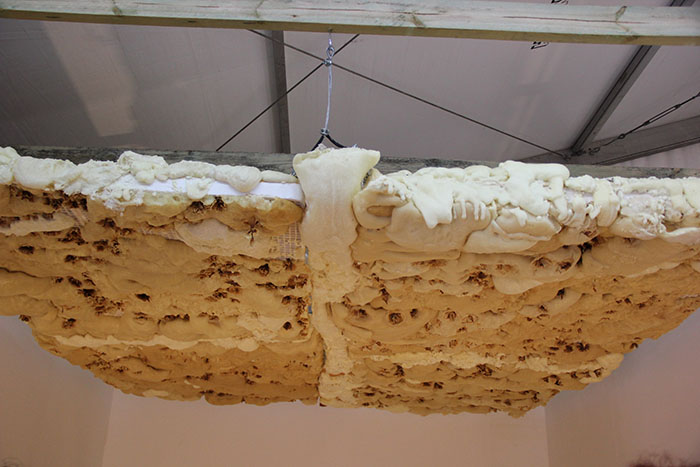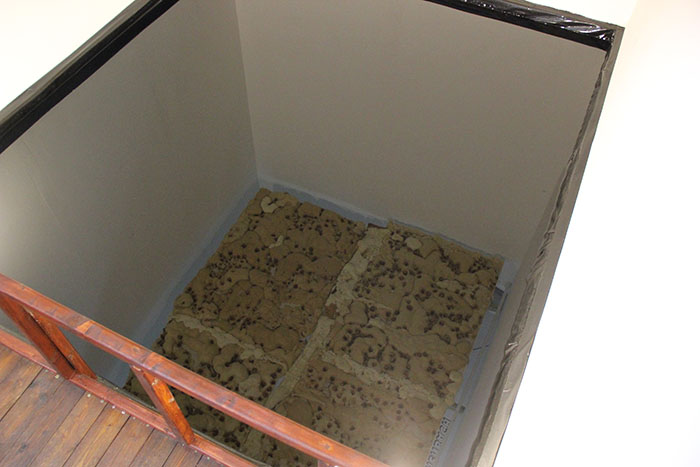Only a year ago, Sigal Cuchacovich grew flowers. In fact, a Google search of her name still turns up results for agriculture, with the mocking option of finding other agricultural businesses near your location.
This year, the Fresh Paint Art Fair was held in the new and impressive Steindhart Nature Museum at Tel Aviv University. The building is still under construction and will host the fair before it is filled with the university’s nature collections, making it the first nature museum of its kind in Israel.
Just a moment before stepping outside, speechless by the inconceivable wealth of Israeli art, I noticed a wooden step, something black and a strong smell of turpentine. The truth is, if there hadn’t been a kind woman there who politely suggested I mount the step, it is likely I would have quickly continued out to lunch.
This step was as sheer an abyss as our twisted reality can be.

Sigal Cuchacovich, an outstanding graduate with a degree in Art and Society from Sapir College, tells me that she was a farmer for the past 19 years. In a fleeting sentence she continues, “Since I was widowed.” In the silence that follows, she cautiously adds that the agricultural sector has been abandoned because the public no longer want to buy their fruits and vegetables, and she means her friends who, one after the other, have shuttered their farms. In the meantime, supermarkets in Israel import vegetables and meat from Europe and ignoring local producers.
She creates her art from the remnants of the agricultural business she ran for most of her life. She creates surfaces of polyurethane foam and flowers that remained under refrigeration on her farm, and withered into the work.
The visitors, she shares, praise the beauty and peacefulness and are envious of living in secluded tranquility. She, however, can tell them of the pesticide spraying that poisons the land, and how agriculture pollutes the land instead of giving life, and of the farmers who are closing because there is no demand for their produce. Instead, she creates new fields from the materials she used in the fields that she herself farmed.
The horizon and optimism of the valley’s beauty is filled with the art smells of oil and turpentine. The smell is present, powerful and destructive, on the face of the earth and the soul that suffer in endless politics.
The work is clean, orderly and well-defined, and it is only the toxicity of the materials and their smell, as well as the title “Corrosion” that reveal what is at the heart of the artwork.
This disturbing trickle of the forgotten periphery of the country into a Tel Aviv art show is the true story that has yet to be told; it still does not have a resolution, but whatever it will be, it likely will not have a happy ending. Not the kind we would like to look at.


Sigal dreams of showing her statement and art to the public at a gallery. Most galleries in Israel, however, require some sort of rental payment from the artist. The flower farm hasn’t produced any flowers or livelihood for a while, and this is not the sort of art that can be sold to support the artist. It is only a reality that must be shouted on the streets of the weary city.

The representative who drew my attention to the step was the curator of Sapir College. She knew to tell me that, due to the location of the college in the Negev desert, they give space for artists to present important topics from the distant periphery, and then she steps back to allow the artist herself to continue the dialogue.
This post is also available in: עברית (Hebrew)


1 Comment
Pingback: Inbar Shahak - Fresh Paint Art exhibition - Inbar Shahak